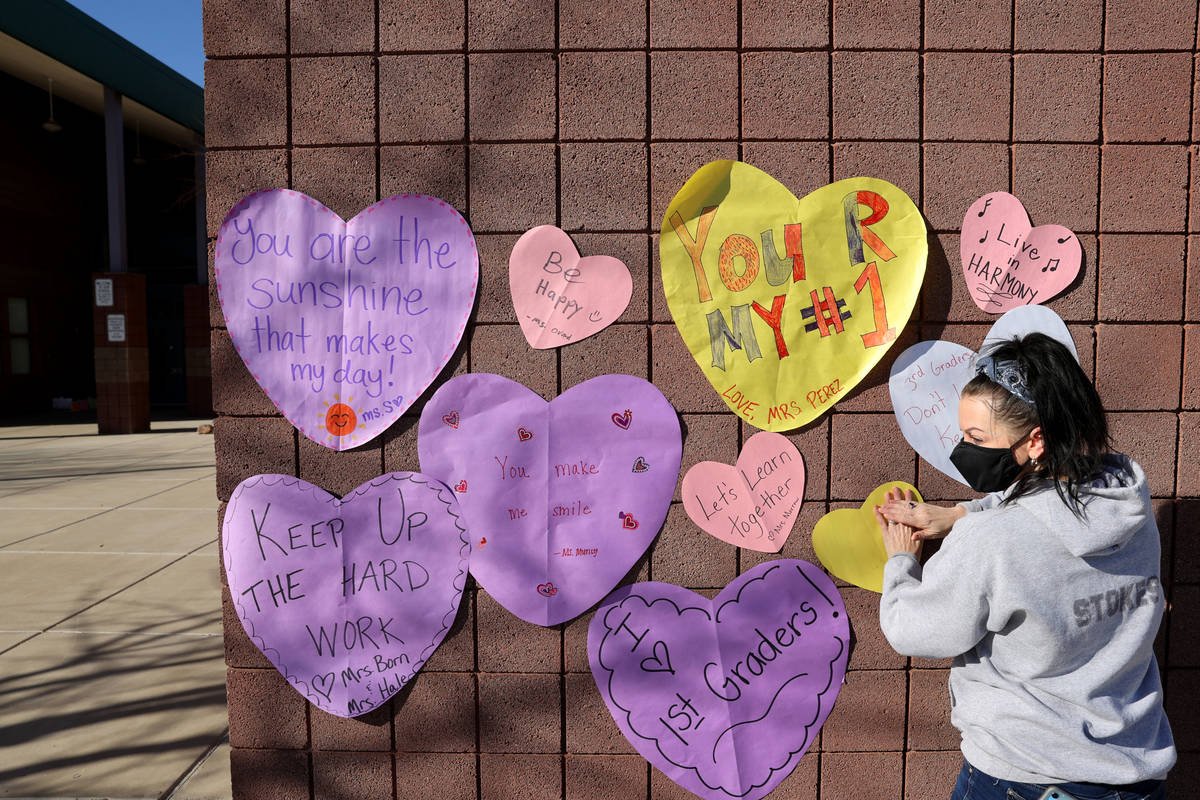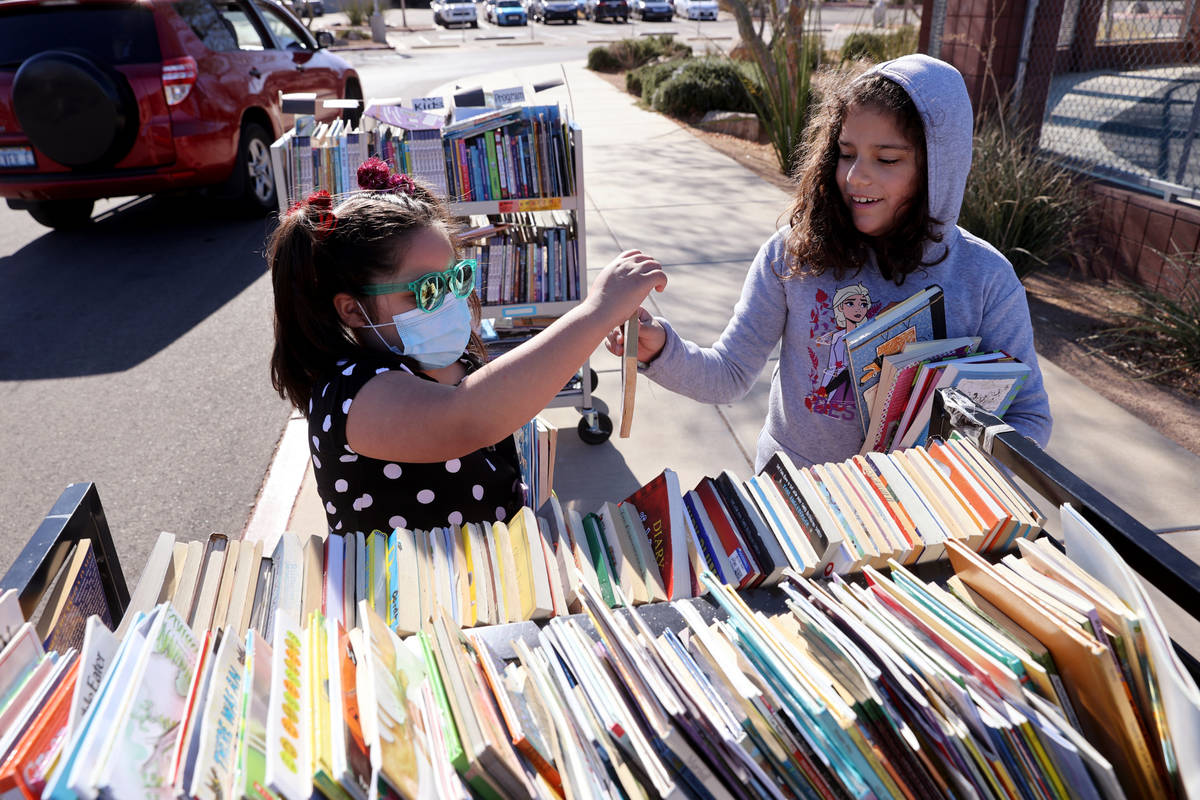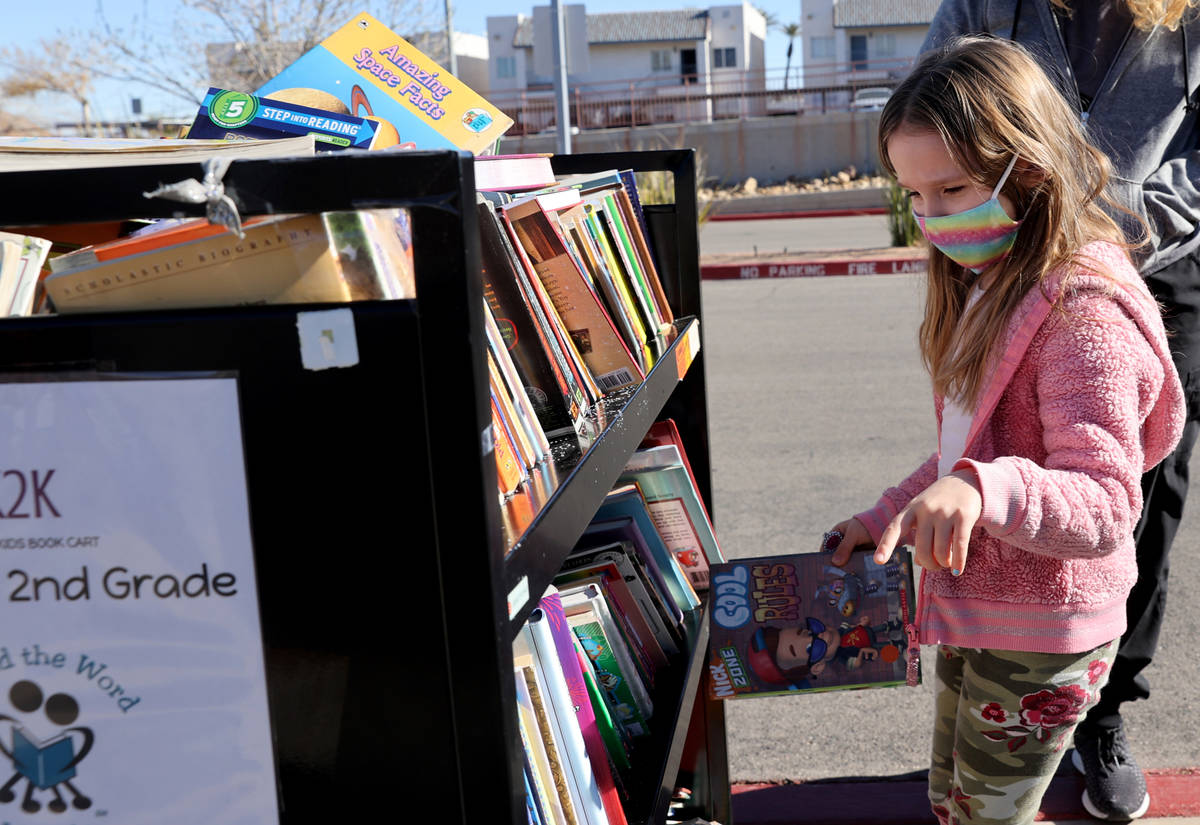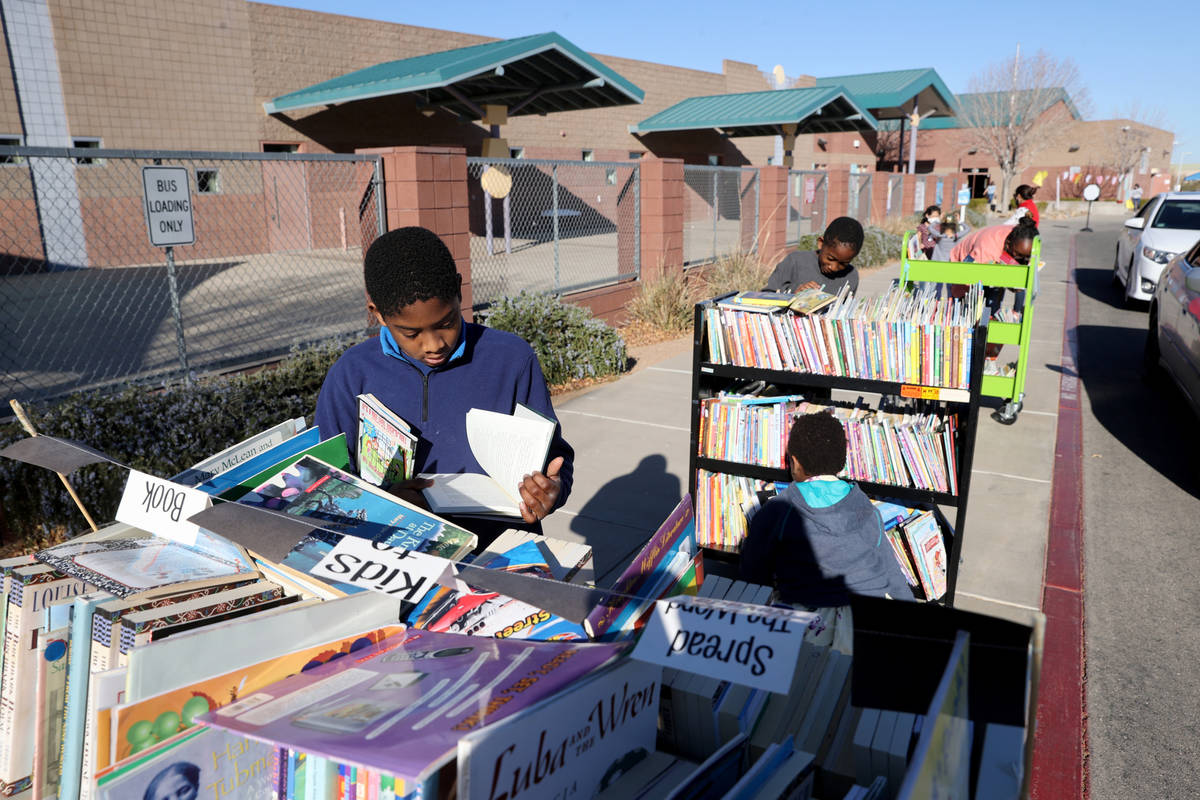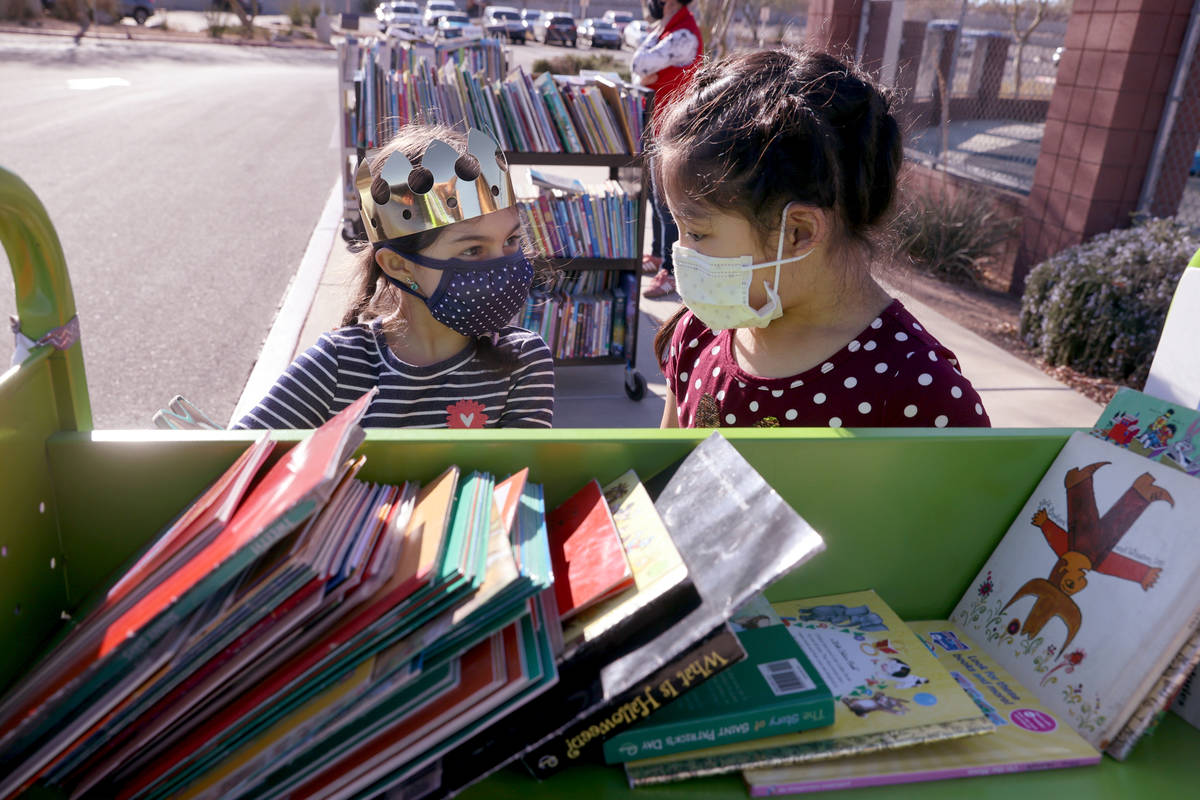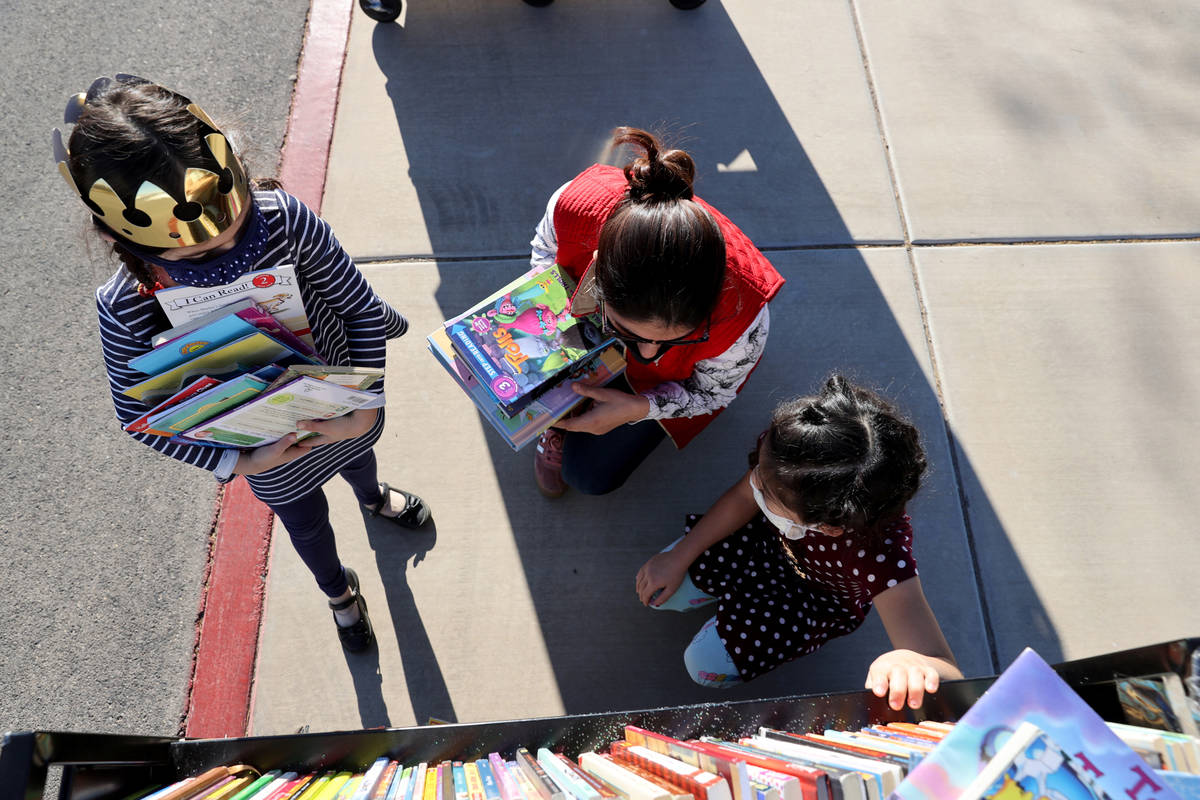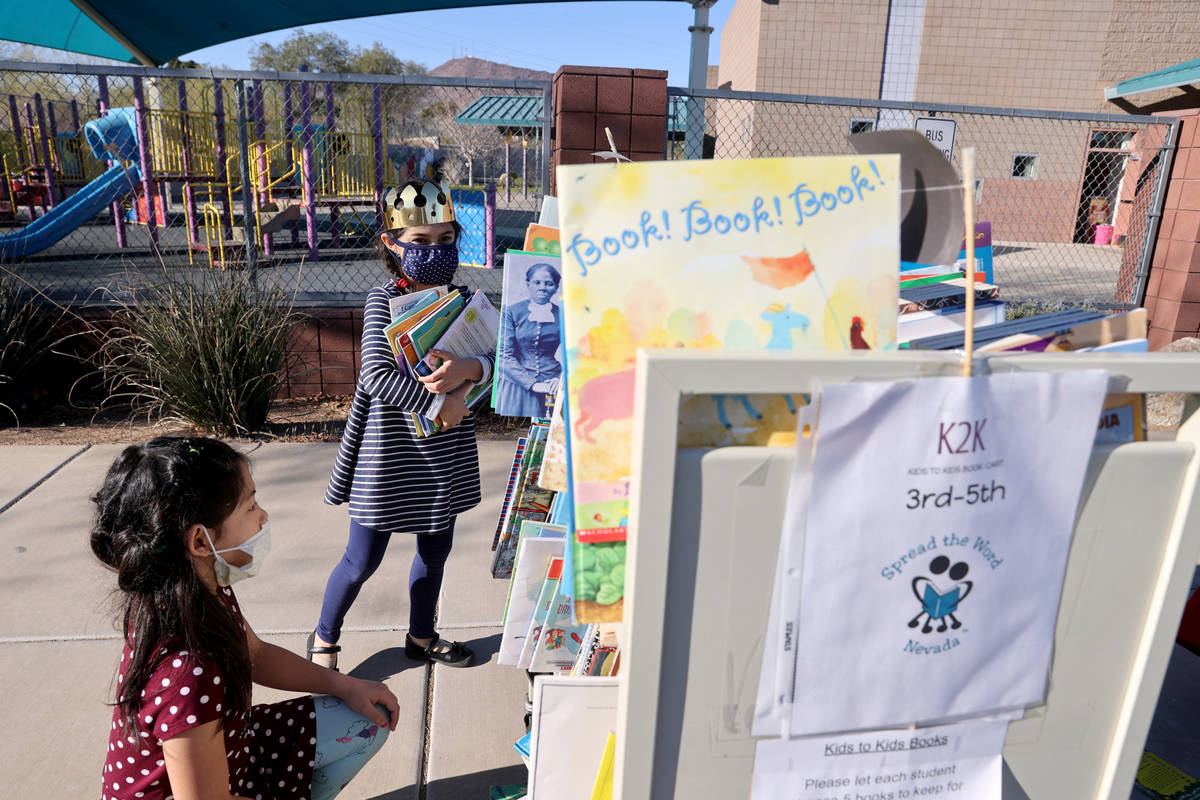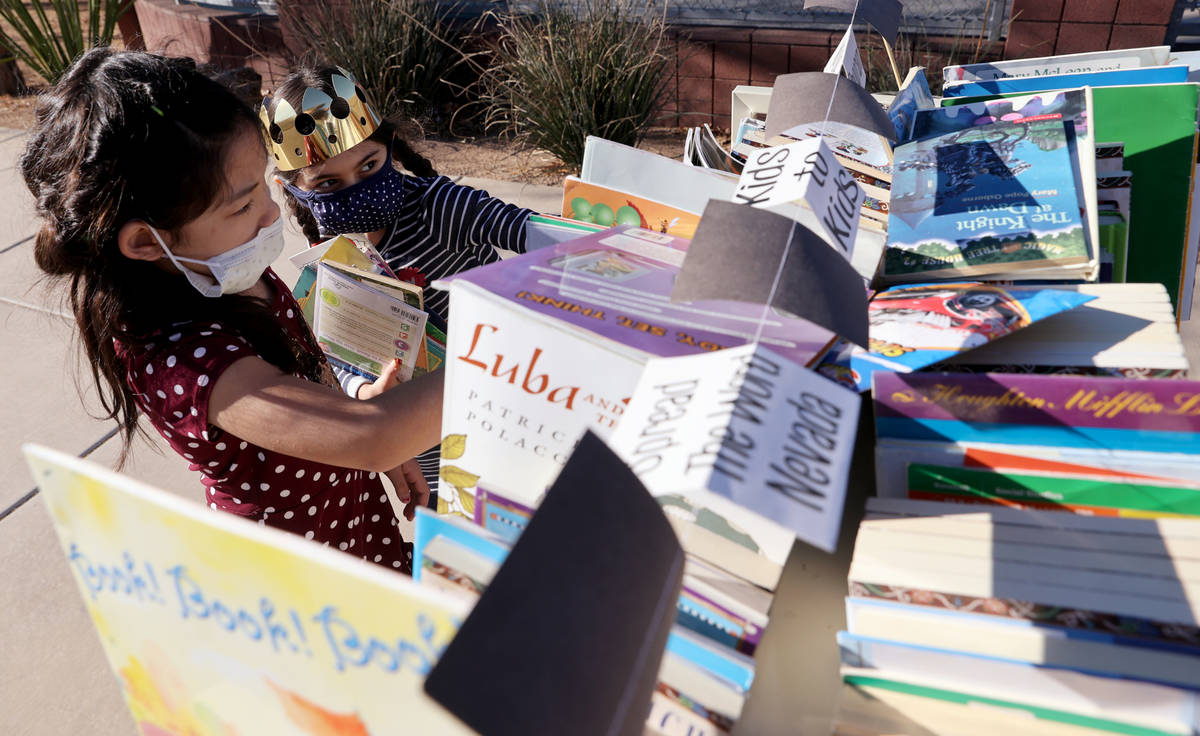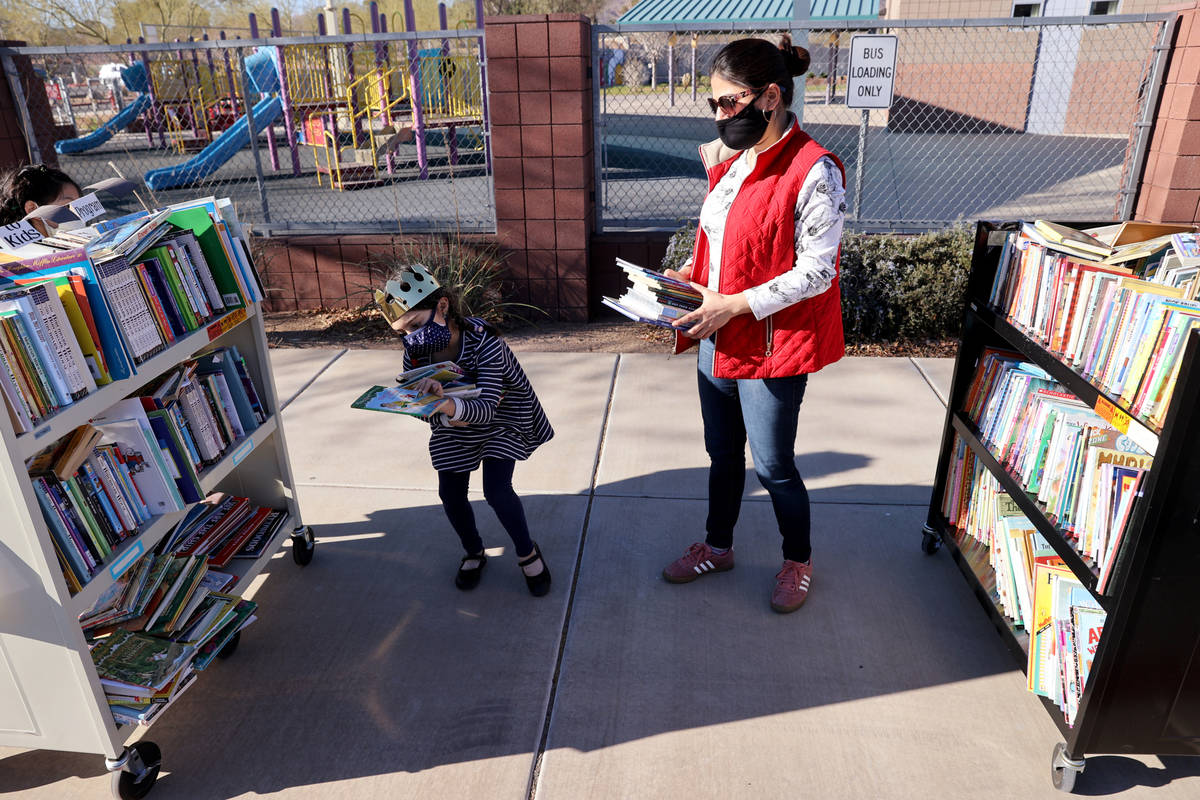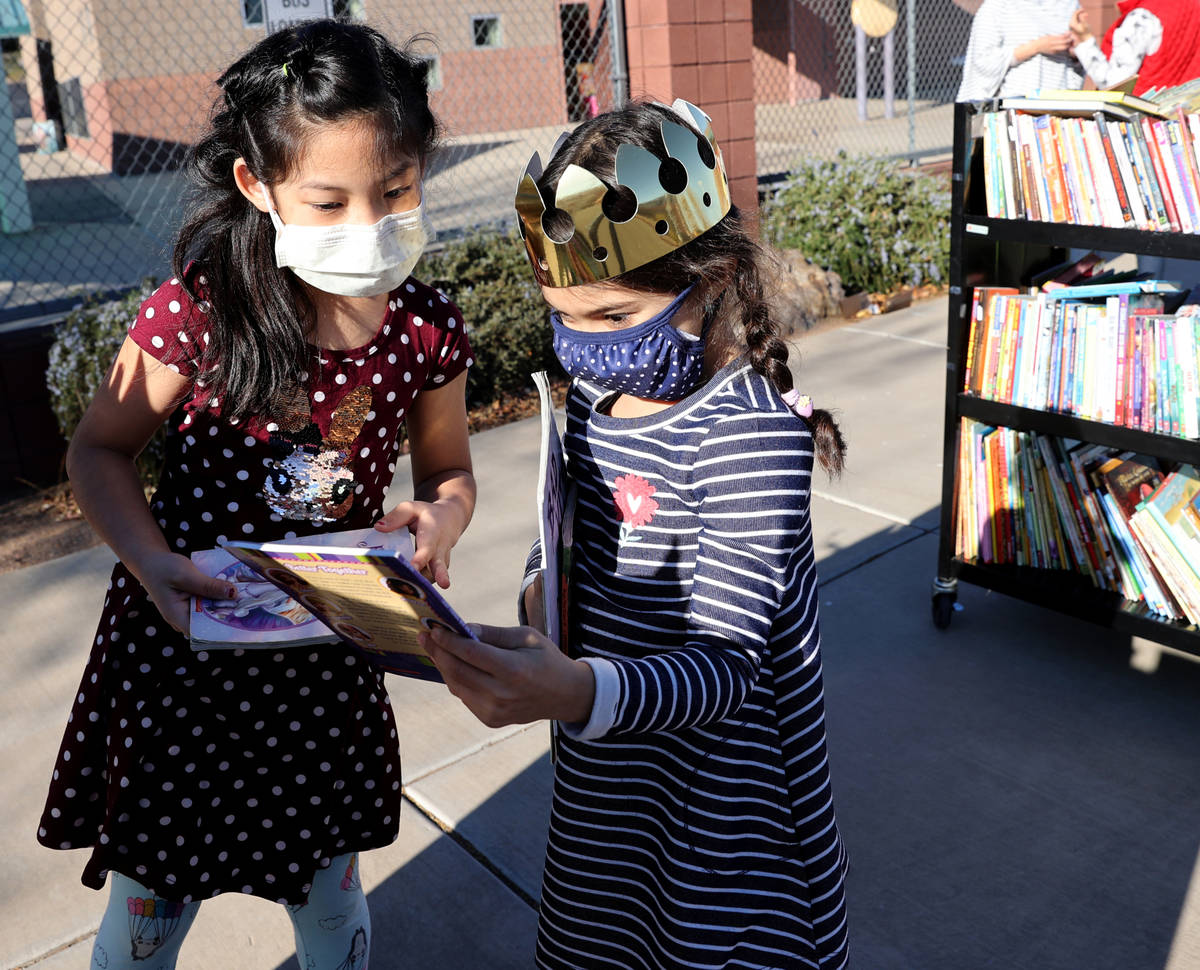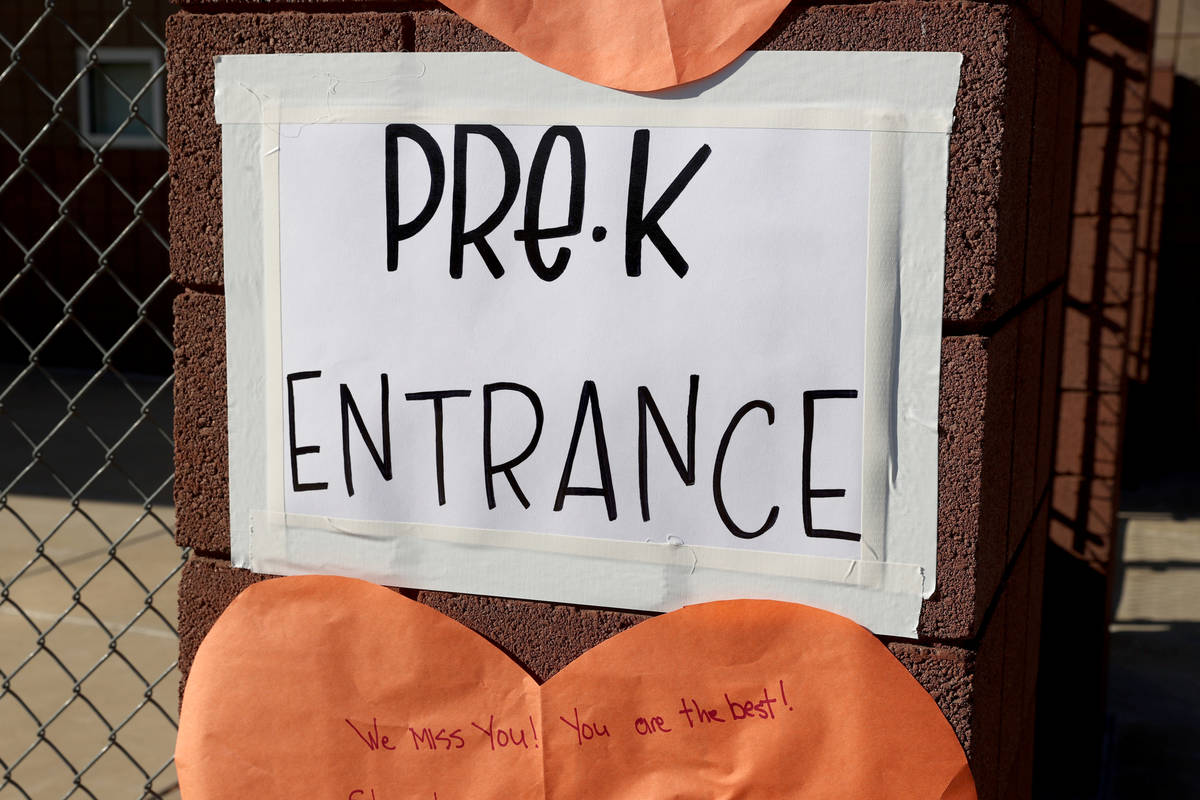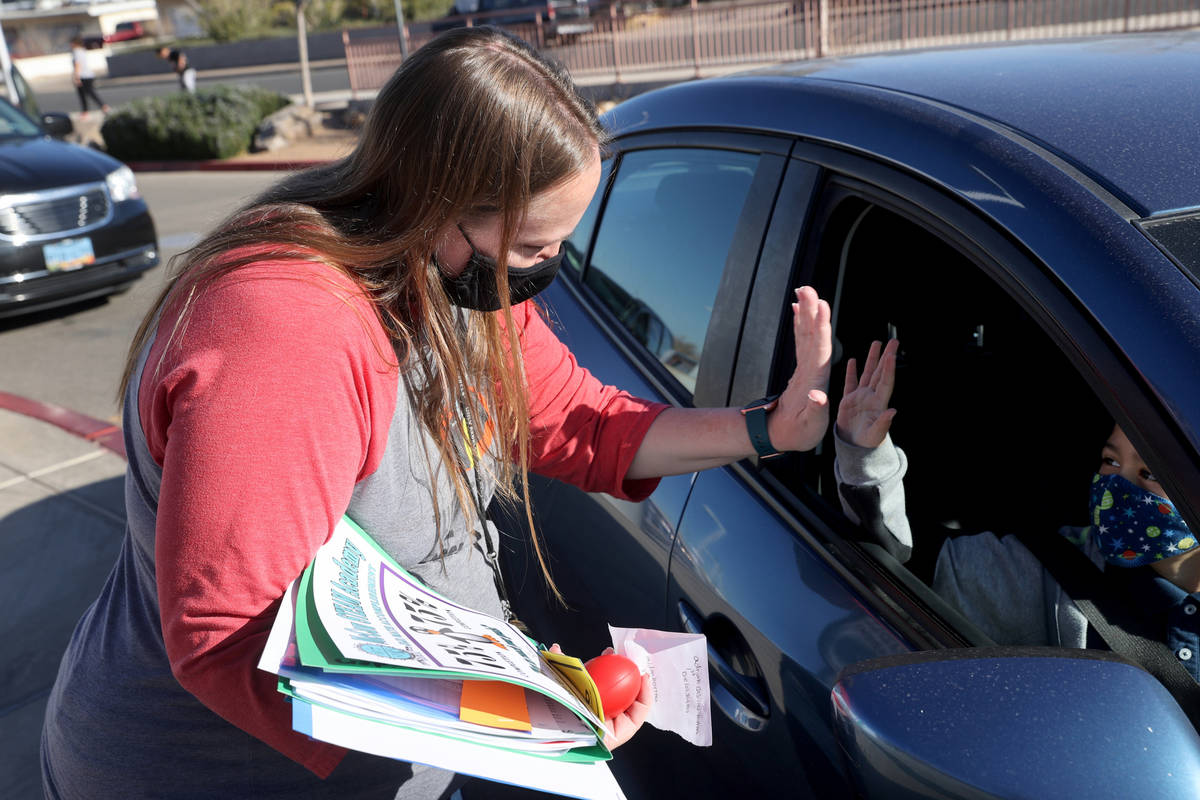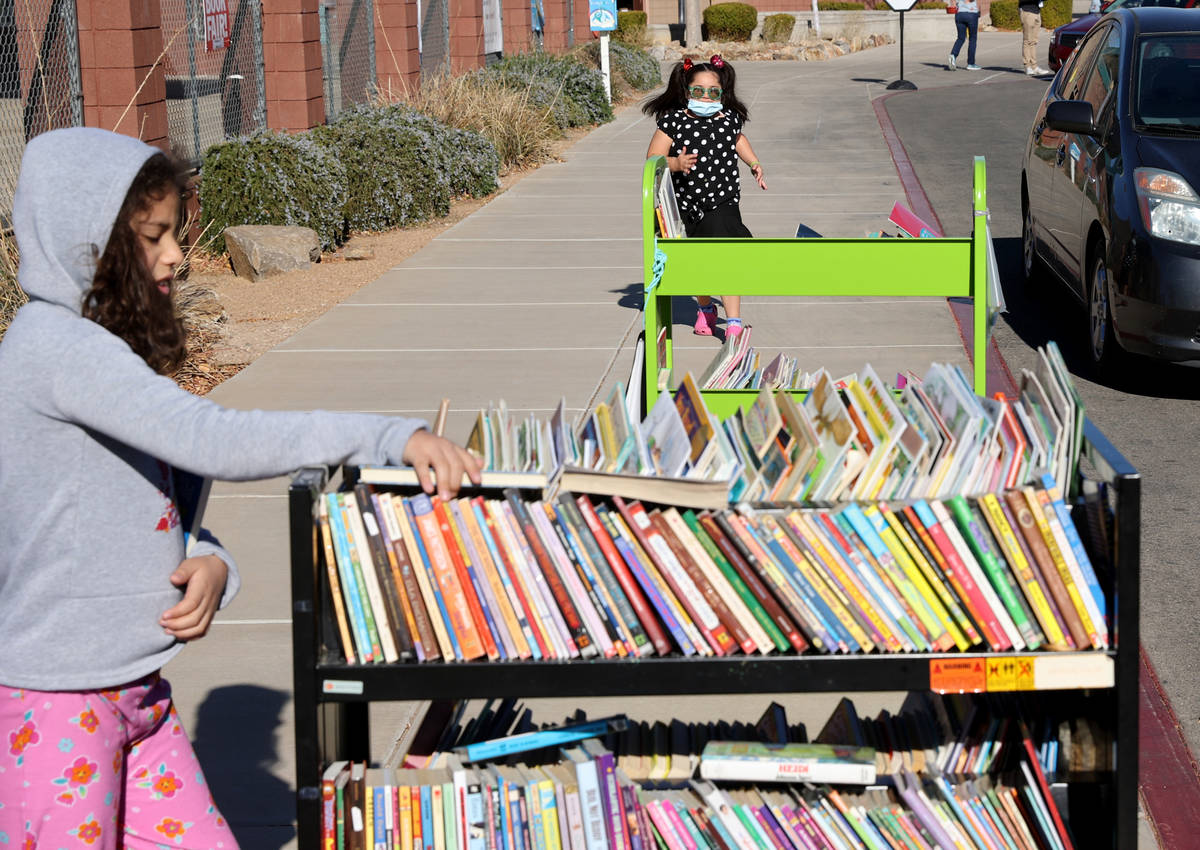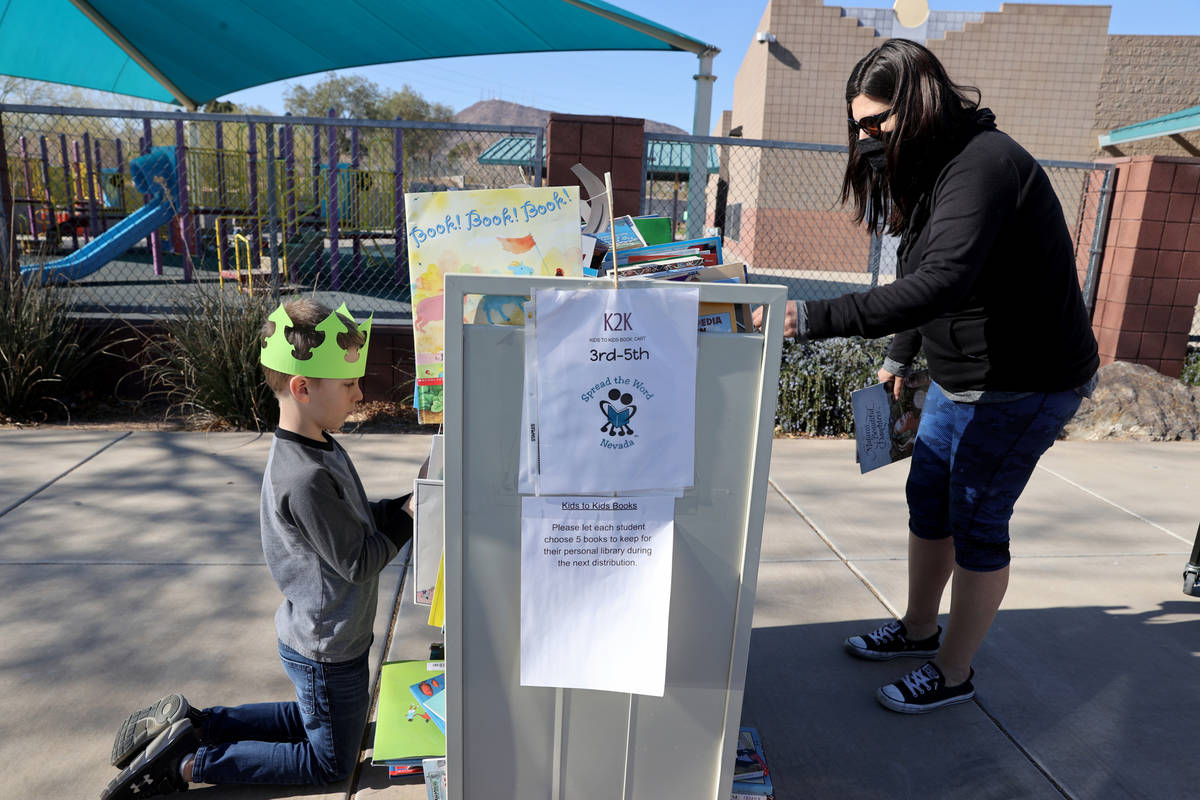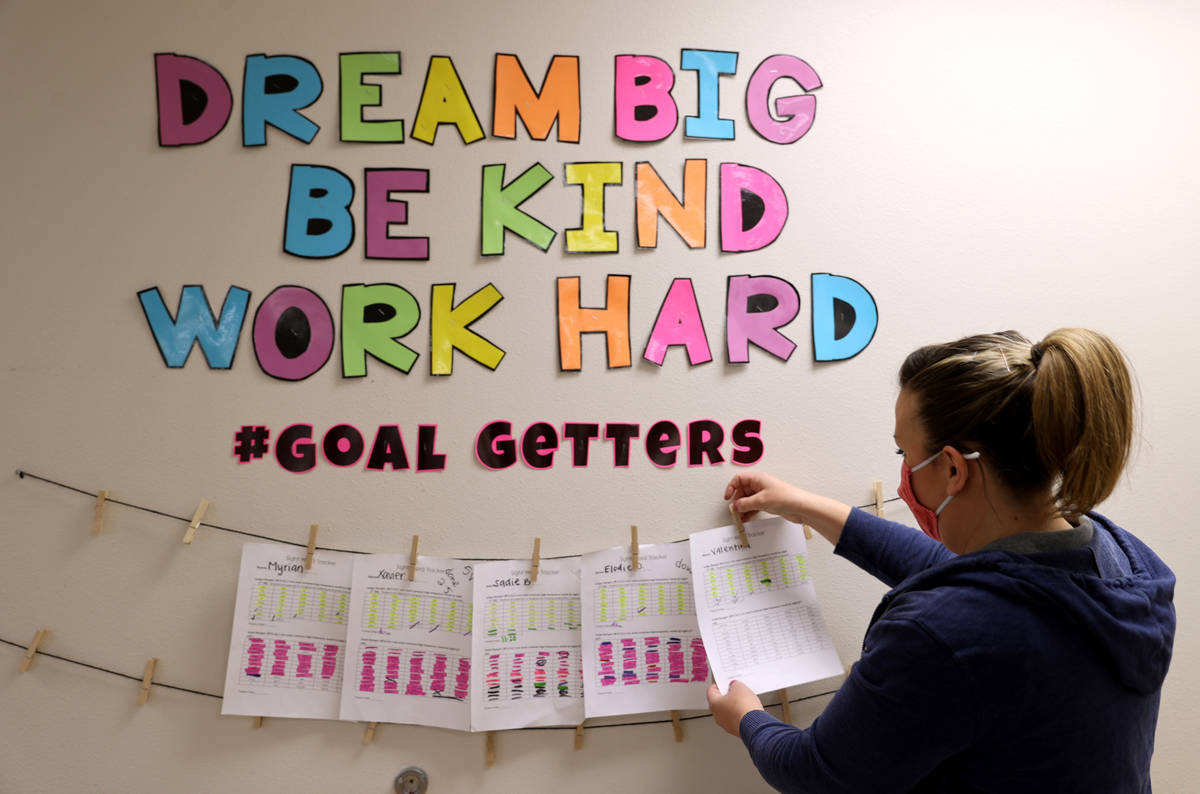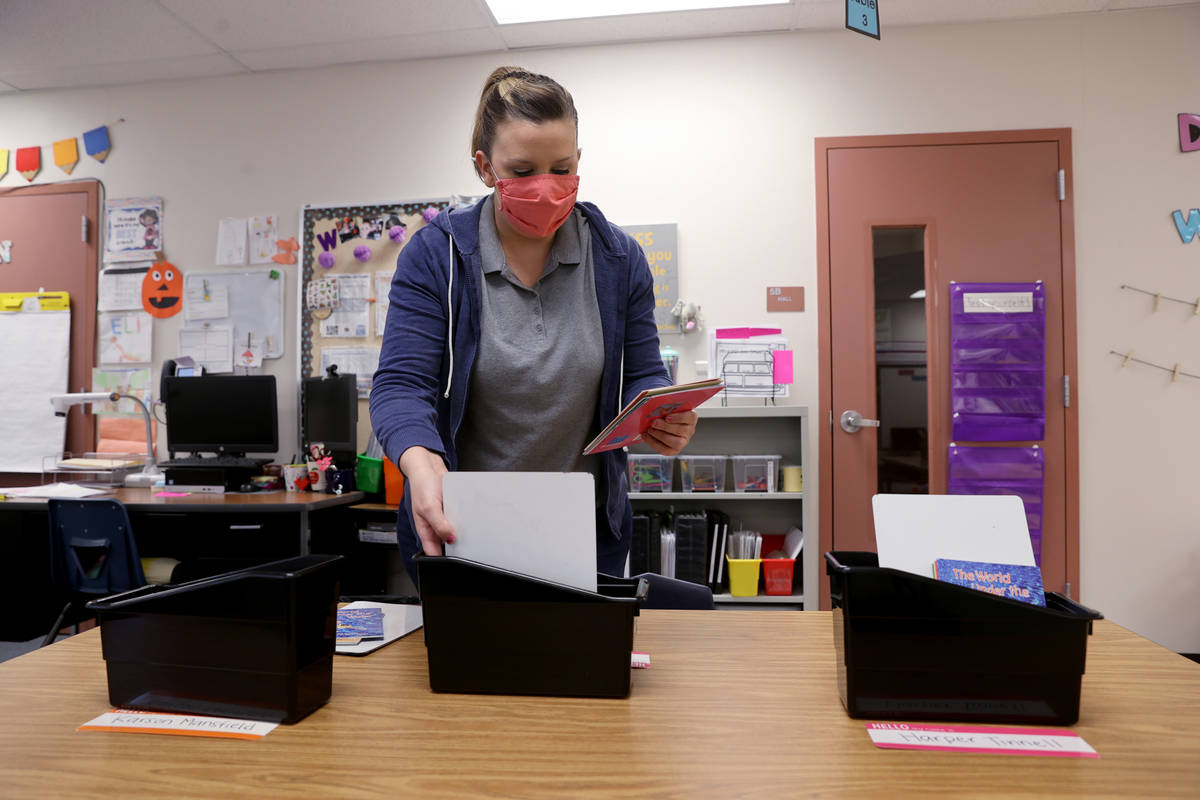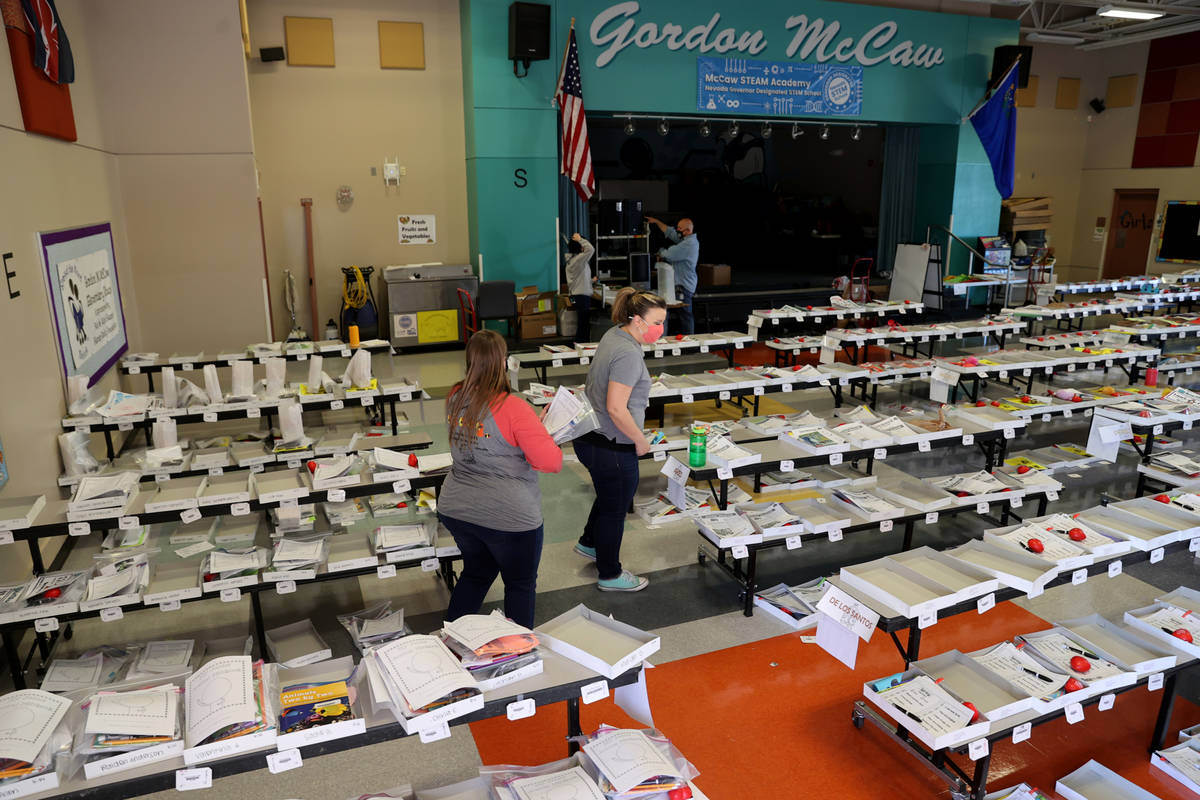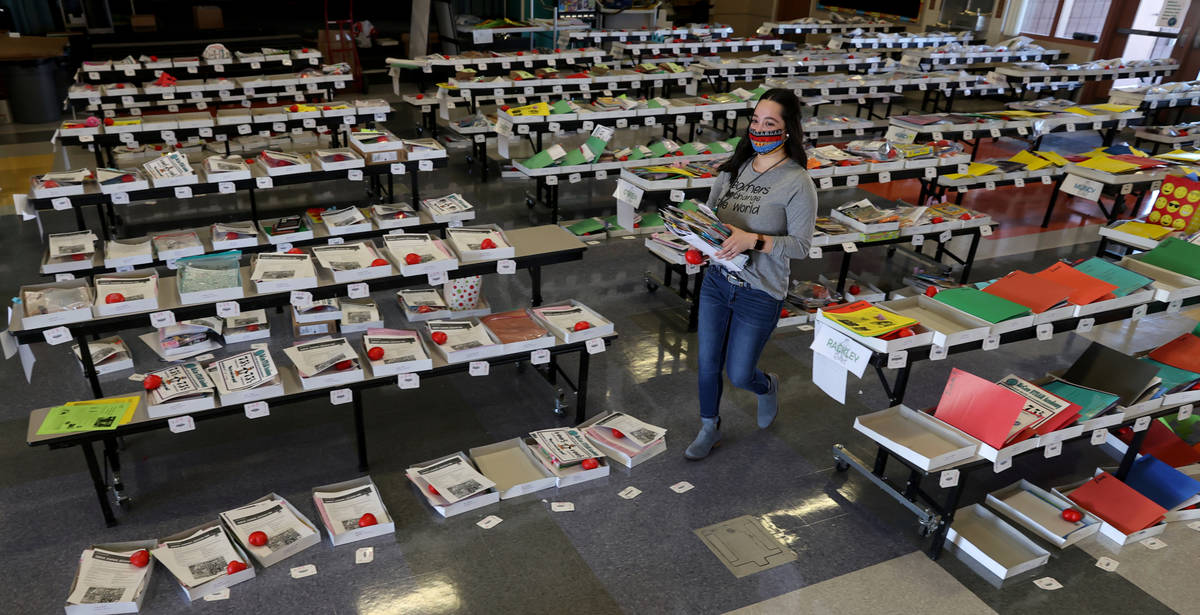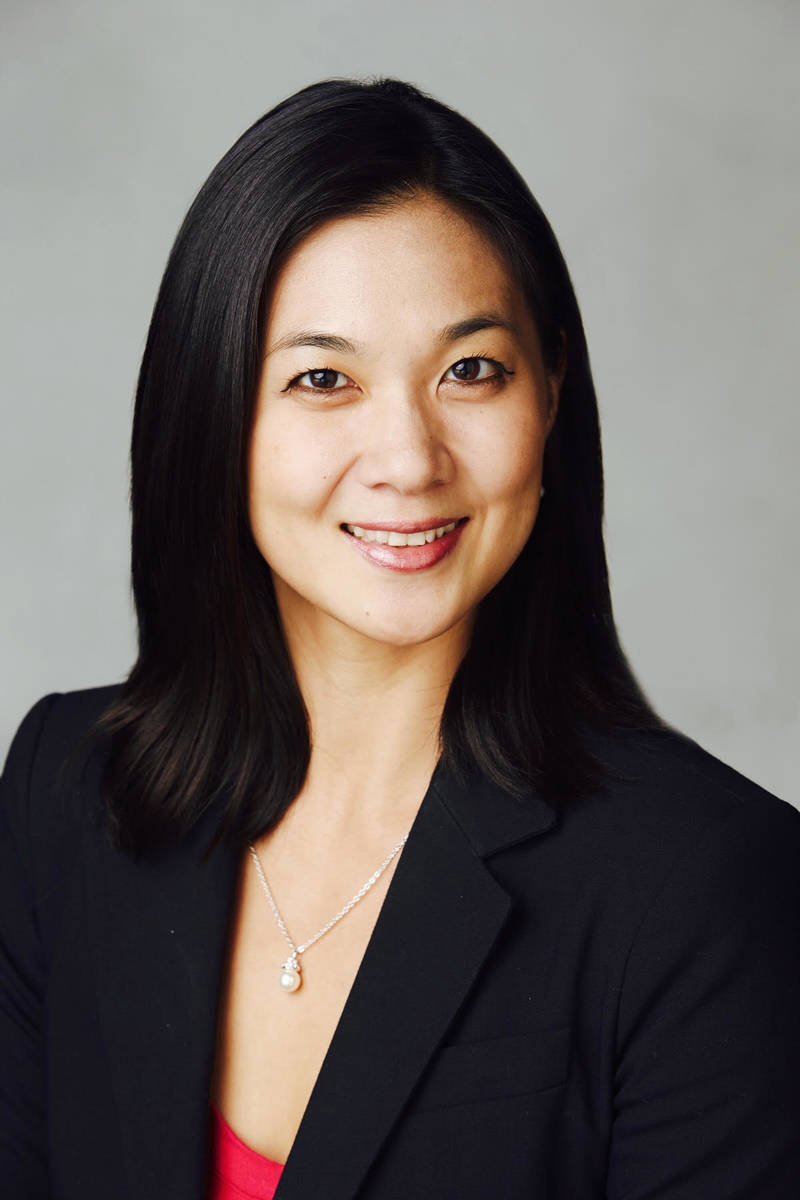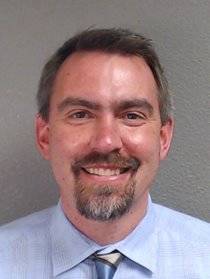Transition back to classroom may not be an easy one
Some of the Las Vegas Valley’s youngest students are facing a huge transition this week as they set foot in a classroom for the first time in nearly a year — or the first time ever, for some — and mental health experts warn that it may not a smooth one.
The first day of school is always fraught with emotion, but Monday’s return to the classroom for some Clark County School District preschool through third grade students is expected to bringing an added dimension to the usual anxieties, experts say.
Young children may be facing mental health challenges stemming from the coronavirus pandemic, including fears about getting sick, grieving the death of a family member or feeling the effects of a parent’s job loss, they note. Others may suffer from acute separation anxiety after being home all day with their parents while the schools were closed.
Still others may have suffered abuse or neglect at home without the safety net that in-person schooling provides in terms of spotting the warning signs.
“We’ve got kids going back to classrooms for the first time in a year, and we need to be looking at what they’ve been doing for the past year,” said John Etzell, executive director at the Las Vegas-based nonprofit Boys Town Nevada.
For example, Etzell said, during distance learning some kids may have been doing schoolwork or attending live class sessions from a comfortable sofa or bed, surrounded by pets or siblings. Or they may have gotten used to days that lack structure or developed the habit of moving frequently, he added.
The situation will be very different in the classroom when the first cohort of kids take their seats on Monday and Tuesday under a hybrid instructional model combining two days a week of in-person learning and three days with distance learning. Students in a second cohort that will attend classes on Thursday and Friday. Families also have the option of continuing with full distance learning, which has been in place for the school district’s roughly 307,000 students since March 23.
District officials and school personnel will be well aware that some of the returning students may be in fragile states.
All staff returning under the hybrid model were slated to watch a “handle with care trauma-informed video,” according to the school district’s reopening plan.
Schools also are supposed to “reteach school and classroom expectations and avoid punitive approaches when managing negative behaviors” while also providing opportunities for students to re-establish routines, it said.
And schools are directed to identify students and families who have been harmed by the pandemic or experienced a major loss and notify a school leadership team, according to the plan.

Child psychologists ready to step in
Boys Town Nevada has a local behavioral health clinic staffed by three child psychologists. The nonprofit also contracts with 14 Clark County School District campuses — primarily Title 1 schools with high poverty rates — to receive referrals for children in need of behavioral health services, including for attention-deficit hyperactivity disorder, anxiety, depression, verbal and physical aggression, difficulties with adjustments, trauma, relationship challenges, phobias and habits such as hair pulling.
With children back in classrooms in person, “the expectations are going to be significantly different,” Etzell said, noting that for some students it will be their first time in a classroom environment. “Behaviors are going to be expected.”
The types of behavior will run the gamut from “struggling to sit still” and having difficulty following instructions to being disruptive during class or experiencing emotional outbursts, experts say.
Another challenge with returning to classrooms: They’ll look different than the ones children remember from a year ago, and there will be health and safety protocols such as wearing a face mask all day, he said.
Etzell said he recommends educators treat the Monday return like the first day of school and consider ways to make it fun and exciting.
He said educators will likely be repeating directions and reviewing expectations more than ever with students. And it will be important to put explanations into “bite-size chunks” so students understand why certain rules are in place, he added.
“Behaviors are going to happen, and being able to listen with empathy to whatever a kid might be feeling needs to be happening both at the school and parent level,” he said.
Some children will be excited about going back to school in person and some won’t, Etzell said, and parents will likely be nervous. “I think parents will also be emotional going into it as well.”
Katherine Lee, an assistant professor in residence for the UNLV school psychology program, said many kids will handle the transition without too much drama.
“I think it really depends on the child and the family and the teacher and how they all prepare the child,” she said.
Finding the right level of excitement
Children hear what’s going on around them and how their parents talk about in-person classes, Lee said, noting it’s important for parents to sound excited, “but not to the point that kids are jumping up and down.”
Lee, a licensed psychologist and school psychologist, added that many of the children will already know their teachers and have been in communication with them remotely for months, so there won’t be fears about “Who’s this new person?” when they enter the classroom.
That won’t be the case for all students, however, as some schools are switching kids to a new teacher depending on how many students are coming back in person versus continuing with distance learning.
Parents may be nervous about their child getting COVID-19 as a result of going to in-person classes, but “you don’t want to communicate that,” she said.
Also, similar to preparing for a new school year, the transition to some in-person classes involve “going through the regular motions that you normally do for back to school,” Lee said, such as having a child pick out their clothes the night before.
For students who’ve never been in a classroom setting, they’re going to have to learn the basics — where to sit, who to listen to, how to stand in line and how to be a good friend, Lee said. “I think it will still be really fun for kids.”
Children at a young age benefit from structure, rules, schedules and consistency, Lee said, and they will be fine if adults around them make the return to classrooms a positive experience.
At Tate Elementary School in the northeast valley, school counselor Dawn Harris said the main mental health impact she has noticed among her students during the pandemic is they’re missing socialization and friendships and after-school programs.
She said she hasn’t seen students internalizing family stressors such as a parent’s job loss but has talked with parents about their COVID-19-related needs and provided them with resources such as how to get help with paying utility bills.
Counseling for parents as well as students
Harris said parents have been good about reaching out to the school for help. She also provides techniques to parents about ways to “decrease kids from even knowing certain things are going on” — such as parents experiencing financial issues — to avoid raising a child’s anxiety level.
Starting Monday, the school will continue to do wellness checks virtually, as well as in-person for students who are attending under the hybrid model. “We have to shift the setting we’re in,” Harris said.
A good thing, Harris said, is that she already knows her students since she worked with them virtually during distance learning. “I’m a familiar face when they see me.”
Harris said she plans to use the same techniques she used during distance learning to help students with their social-emotional health, including deep breathing, using an hourglass and counting to 10 as ways to calm down.
It’s easier to provide support for such exercises in person, she said, because students can mimic her actions better and she can be more animated with her hands than when on a video call.
From a school perspective, preparing to transition to a hybrid model involves “a lot of preparation from all different angles,” said Jennifer Furman-Born, principal at McCaw STEAM Academy, a Clark County School District magnet school in downtown Henderson. That includes preparing facilities and classrooms, “culture climate rebuilding” and re-energizing staff, she said.
About 55 percent of McCaw’s preschool through third grade students are opting to come back under the hybrid model, close to the percentage districtwide, Furman-Born said.
The school will help children find their classrooms, which they’ve never seen in person, and have demonstrated what their teacher will look like while wearing a face mask, Furman-Born said. And families have had a chance to see what their child’s classroom looks like via Google Meet before their child’s return.
The school doesn’t want to make it scary for children to wear face masks and practice social distancing, Furman-Born said. Instead, staff will strive to make it fun and have games to go along with having proper spacing.
Instead of focusing on what students can’t do, she said, “we’ll focus on what we can.”
‘We really don’t know what to expect’
Molly Wood, a kindergarten teacher at McCaw, has researched how other school districts across the nation have handled transitioning children to in-person classes during the pandemic. She said she expects the first few days of in-person classes will be different.
It will be important for educators to set the tone to make it fun and engaging and explain the reasons why students need to do certain things, such as wear a face mask, said Wood, who is in her fourth year with the school district.
But it’s still a new experience for all involved, and there are unknowns.
“We really don’t know what to expect,” said Sarah Popek, principal at Tate Elementary School. “Obviously, we have this idea that kids will be so excited to be back in person, but we know that some of our students will have some difficulties with this transition.”
Only 33 percent of Tate’s students are returning to the classroom, with the rest opting for distance learning.
There will be a school counselor, and specialists from Boys Town Nevada and Communities In Schools on site, Popek said.
The school is also ensuring signage on campus is student friendly, Popek said. Signs feature a tiger — the school’s mascot — to explain how to follow health and safety protocols.
Tate Elementary is occupying portable classrooms temporarily this school year at Heard Elementary School, so students attending in person will face an added challenge: They’ve never set foot on this particular campus. Open houses were held last week to help orient parents and students to their new surroundings.
Tate’s original building, which opened in 1971, was demolished and is being replaced. The new facility is slated for completion on Aug. 1.
Each student returning in person under the hybrid model will get a reusable water bottle and two cloth face masks with the school’s logo on them, Popek said, adding that many families may not have the means to purchase cloth masks for their children. The school also has fidget bands for students to use at their desk.
The school schedule includes “brain breaks” where students can go outside. Because playground equipment will be off limits, the school has created a recess pack for every child, including sidewalk chalk, a jump rope and a miniature ball of string.
Virginia Mosier, a kindergarten teacher at Tate and 20-year classroom veteran, is teaching the in-person part of the hybrid model. Last week, she had a presentation for students about how things are going to work in classes, including their “ninja rules” like wearing a face mask, keeping their distance and regularly washing their hands.
It’s always a challenge to get kindergartners to walk in a line and stay together as a group, Mosier said. She plans to use a rope with rings six feet apart attached to it and each child will have a ring to hold onto to ensure social distancing.
Mosier said she can tell during live video lessons that her students are very active while watching from home. She typically incorporates singing into her instruction with students, but doesn’t know if they’ll be able to do that in person. But she plans to get her students up and moving as much as possible.
“I think the biggest problem is just going to be keeping everybody separated into their own space and to keep their own distance,” she said.
Contact Julie Wootton-Greener at jgreener@reviewjournal.com or 702-387-2921. Follow @julieswootton on Twitter.
RELATED
Young students return to Las Vegas public schools



